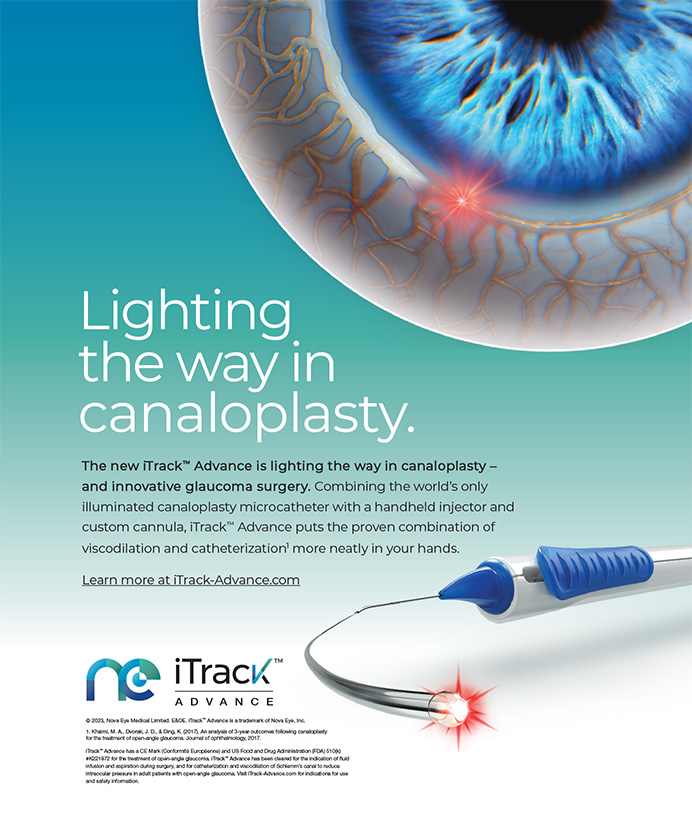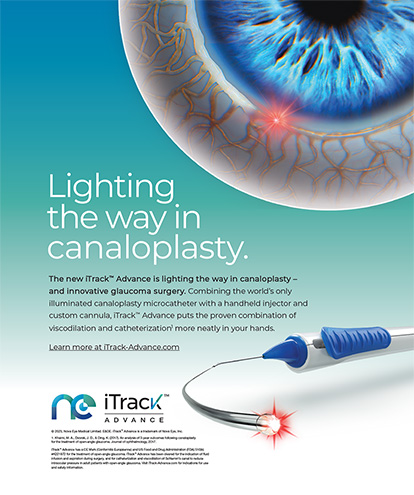Removing a cataract from an eye with zonular instability can be challenging, but a variety of capsular support devices have been developed to make surgery safer and easier. In cases of severe zonular instability, surgeons will often use flexible iris retractors or capsular support hooks to fixate the capsular bag, and then, they will place a capsular tension ring (CTR) later in the case. A new option for complex anterior segment surgery is the MST Capsular Retractor (MicroSurgical Technology), which mechanically anchors the capsular bag to the scleral wall to provide temporary stability.
This disposable capsular support hook is made of a double loop of nylon, a silicone disk that secures the retractor in place, and a sheath of polypropylene to add mechanical stability. The shape of the device is unique: the part of the retractor that comes into contact with the capsular equator is looped and smooth, and the part that contacts the anterior capsule and capsulorhexis is broad. This design helps me to distribute force safely (Figure 1). In my experience, using an MST Capsular Retractor allows me to delay the placement of a CTR, thus facilitating the removal of cortical and nuclear material.
HOW IT WORKS
I have found the MST Capsular Retractor as easy to place as an iris hook. The device is flexible and can be inserted through a 1-mm paracentesis. I place an ophthalmic viscosurgical device between the anterior capsule and the remaining lens to help me position the retractor. The looped tip of the hook sits at the equator of the lens capsule, and the “elbow” of the hook sits at the edge of the capsulorhexis. The device essentially performs three functions at once: (1) it prevents lens subluxation, (2) it supports the lens equator, and (3) it retracts the iris (Figure 2). The device can be removed simply through the primary incision.
SAFETY
The looped tip of the device reduces the risk of puncturing the equatorial capsule, and the flat, double-stranded anterior portion of the hook prevents capsular tears. By maintaining the capsule's integrity for the eventual placement of a CTR, the retractor's safety features have improved my confidence when operating on eyes with suboptimal zonular support.
CONCLUSION
I have a lower incidence of iatrogenic capsular damage with the MST Capsular Retractor than with other capsular support devices, and it is easy and safe to use.
Brandon D. Ayres, MD, is a surgeon in the Cornea Service at Wills Eye Institute in Philadelphia. He acknowledged no financial interest in the product or company mentioned herein. Dr. Ayres may be reached at (484) 434-2700; bayres@willseye.org.


